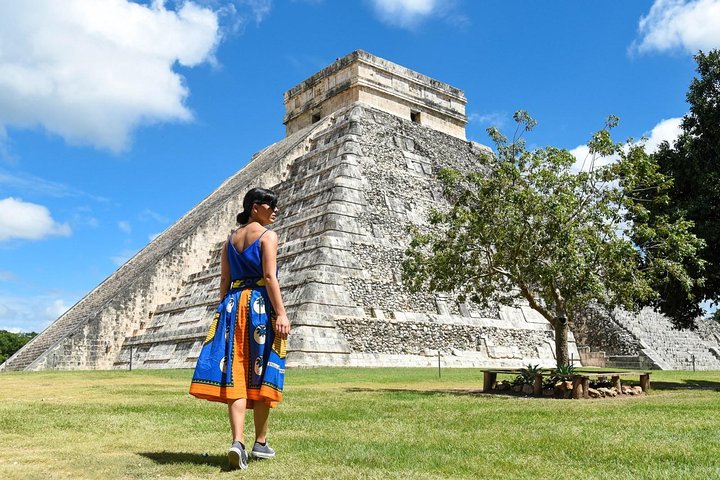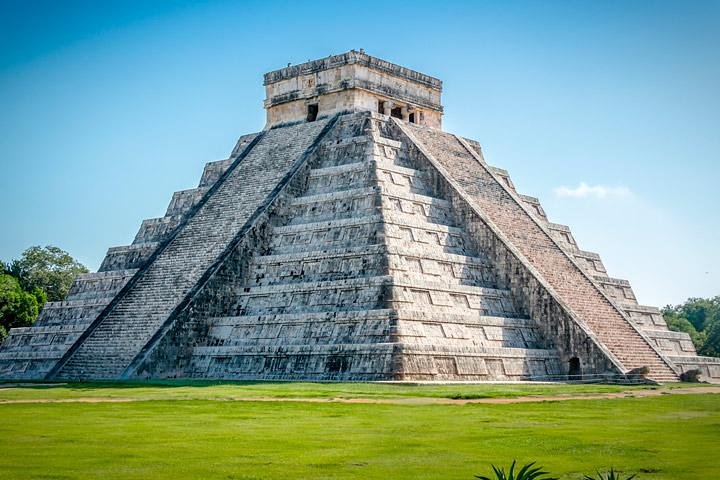Journey Through Time: Exploring the Mayan Marvels of Chichen Itza and Coba
Drawn by the allure of ancient civilizations and the call of the wild, I embarked on a journey to explore the Mayan ruins of Chichen Itza and Coba. Join me as I delve into the heart of the Yucatán, where history and nature intertwine in a breathtaking dance.
Awakening to Ancient Echoes
The sun had barely begun its ascent when I found myself on a journey to the heart of the Yucatán Peninsula, a place where the whispers of ancient civilizations still linger in the air. As a biologist and environmental advocate, the allure of exploring the Mayan ruins of Chichen Itza and Coba was irresistible. The early morning departure from Riviera Maya was a blessing in disguise, as it allowed us to arrive at Chichen Itza just as the gates opened, avoiding the throngs of tourists and the oppressive midday heat.
Our guide, Gina, was a fountain of knowledge, weaving tales of the Mayan civilization that captivated even the youngest members of our group. As we wandered through the site, the grandeur of Kukulcan Castle and the intricate carvings of the Warriors Temple left me in awe. The observatory, with its celestial alignments, spoke to the Mayans’ profound understanding of the cosmos. It was a humbling reminder of the ingenuity of ancient cultures and their deep connection to the natural world.
After an enlightening tour, we had time to explore on our own. I took this opportunity to reflect on the importance of preserving such sites, not just for their historical value but for the ecological significance they hold. The surrounding jungle, teeming with life, is a testament to the resilience of nature and the need for its protection.
A Refreshing Dive into the Cenote Ik Kil
Our next stop was the Cenote Ik Kil, a natural sinkhole that offered a refreshing respite from the heat. As I descended the stone steps into the cenote, the cool, clear water beckoned invitingly. Swimming in this sacred pool was a surreal experience, the sunlight filtering through the opening above, casting ethereal patterns on the water’s surface.
The cenote is more than just a swimming spot; it’s a vital part of the region’s ecosystem. These natural wells are crucial for the area’s water supply and support a diverse range of flora and fauna. As I floated in the water, I couldn’t help but think about the delicate balance of this ecosystem and the importance of sustainable tourism practices to ensure its preservation.
After our swim, we enjoyed a buffet lunch, a delightful spread that provided the energy needed for the next leg of our adventure. The food, a blend of local flavors, was a reminder of the rich cultural tapestry of the Yucatán.
Pedaling Through History at Coba
Rejuvenated, we set off for Coba, a site that offers a more intimate glimpse into the Mayan world. Unlike Chichen Itza, Coba is nestled deep within the jungle, and the best way to explore it is by bicycle. As we pedaled along the ancient pathways, the sounds of the jungle enveloped us, a symphony of bird calls and rustling leaves.
The highlight of Coba is the Nohoch Mul pyramid, one of the few Mayan pyramids that visitors can still climb. Standing atop the pyramid, the view was breathtaking—a sea of green stretching as far as the eye could see, punctuated by the occasional call of a howler monkey. It was a poignant reminder of the interconnectedness of history and nature.
Our guide, Gina, had mentioned the possibility of encountering wildlife, and true to her word, we were treated to the sight of monkeys playfully swinging through the trees. It was a fitting end to a day that celebrated both the marvels of human achievement and the wonders of the natural world.
As we made our way back to the hotel, I reflected on the day’s experiences. The tour was not just a journey through history but a call to action for conservation. The Mayan ruins and the surrounding ecosystems are treasures that must be protected for future generations. This adventure was a reminder of the beauty and fragility of our world, and the responsibility we all share in preserving it.









































